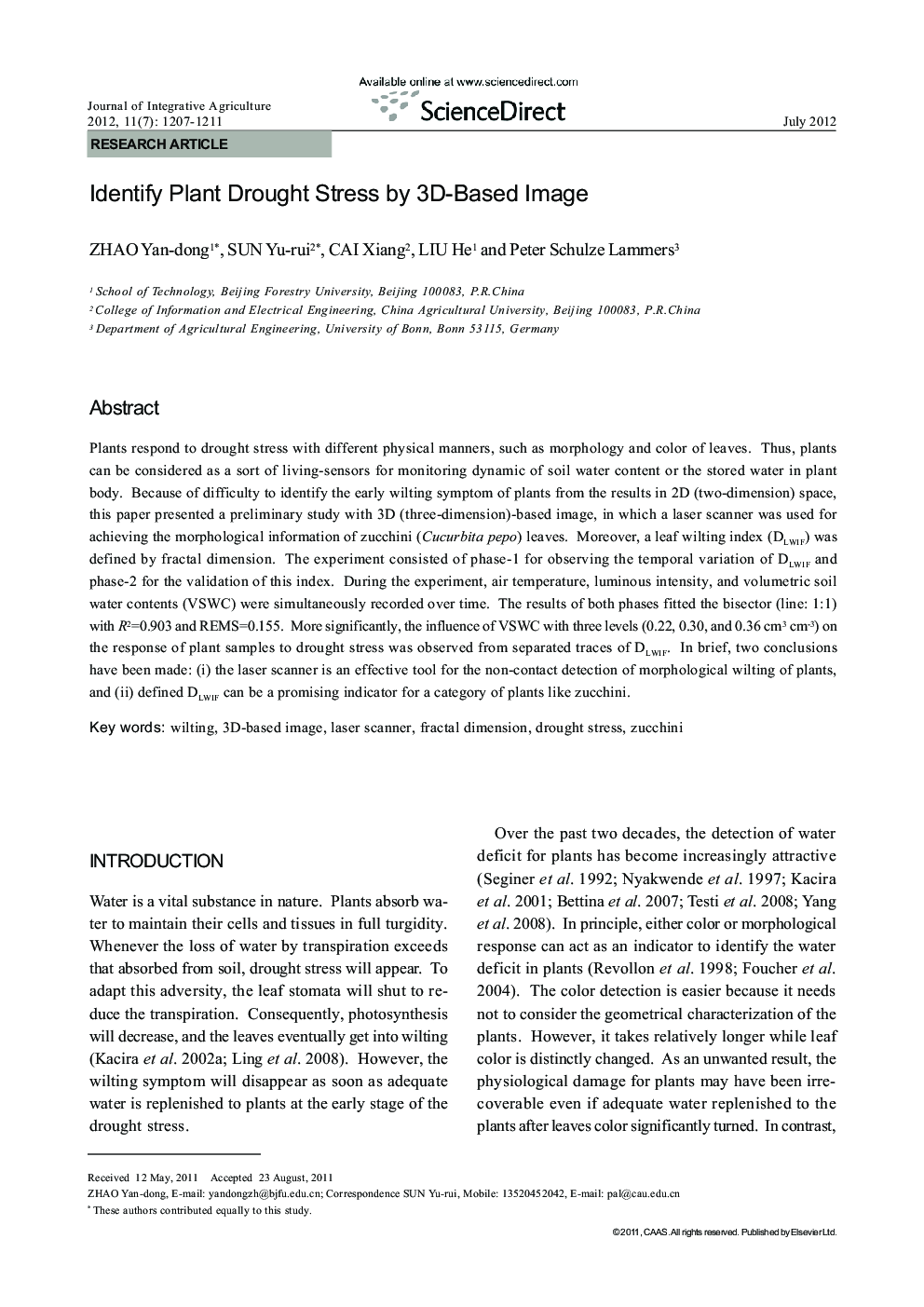| Article ID | Journal | Published Year | Pages | File Type |
|---|---|---|---|---|
| 4495134 | Journal of Integrative Agriculture | 2012 | 5 Pages |
Plants respond to drought stress with different physical manners, such as morphology and color of leaves. Thus, plants can be considered as a sort of living-sensors for monitoring dynamic of soil water content or the stored water in plant body. Because of difficulty to identify the early wilting symptom of plants from the results in 2D (two-dimension) space, this paper presented a preliminary study with 3D (three-dimension)-based image, in which a laser scanner was used for achieving the morphological information of zucchini (Cucurbita pepo) leaves. Moreover, a leaf wilting index (DLWIF) was defined by fractal dimension. The experiment consisted of phase-1 for observing the temporal variation of DLWIF and phase-2 for the validation of this index. During the experiment, air temperature, luminous intensity, and volumetric soil water contents (VSWC) were simultaneously recorded over time. The results of both phases fitted the bisector (line: 1:1) with R2=0.903 and REMS=0.155. More significantly, the influence of VSWC with three levels (0.22, 0.30, and 0.36 cm3 cm−3) on the response of plant samples to drought stress was observed from separated traces of DLWIF. In brief, two conclusions have been made: (i) the laser scanner is an effective tool for the non-contact detection of morphological wilting of plants, and (ii) defined DLWIF can be a promising indicator for a category of plants like zucchini.
